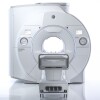MR technique may put an end to ADHD misdiagnosis
by Lauren Dubinsky, Senior Reporter | June 18, 2014

Vitria Adisetiyo
Brain iron levels may be able to diagnose attention deficit hyperactivity disorder (ADHD) and help physicians and parents determine the best treatment options, according to a recent study published online in the journal Radiology.
Vitria Adisetiyo, a postdoctoral research fellow at the Medical University of South Carolina, and the other members of the research team measured the brain iron levels in 22 children and adolescents with ADHD — 12 who never took medication for the disorder — and 27 healthy controls.
They used an MR technique called magnetic field correlation (MFC) imaging and found that the ADHD patients who never took medication had significantly lower brain iron levels than the ADHD patients who had been on psychostimulant medication, and those in the control group.

 Additionally, the ADHD patients who had been on medication had similar brain iron levels to the control group, which means that brain iron may increase to normal levels with psychostimulant treatment.
Additionally, the ADHD patients who had been on medication had similar brain iron levels to the control group, which means that brain iron may increase to normal levels with psychostimulant treatment.
However, they found no difference in blood iron between any of the groups, which suggests that iron absorption into the brain might be abnormal in ADHD even though blood iron levels in the body are normal.
Right now, ADHD is diagnosed based on subjective clinical interviews and questionnaires, but that could potentially lead to misdiagnoses. The researchers are hoping that MFC will prevent that.
"To have something that can maybe pull out children with and without ADHD prior to taking medication would be really helpful, as well as exciting," Adisetiyo told DOTmed News.
MFC was first introduced in 2006 by two of the co-authors of the study — Joseph A. Helpern and Jens H. Jensen. It's available on any standard clinical MR — it's just a sequence that an MR technician and physicist program.
"The novelty and the nice thing about it is that there are no injections into the child in terms of injecting them with radiation," said Adisetiyo. "That's really important, considering most of ADHD patients are kids."
But more research is needed to confirm that MFC can help diagnose these patients. "We're recruiting more subjects so that we can validate that these findings are robust and that they're consistent even in a new population," said Adisetiyo.
In the future, they plan to conduct a longitudinal study looking at children with ADHD before and after taking psychostimulant medications. If they're able to prove that ADHD patients have low brain iron levels before medication and that the levels normalize after medication then they might be able to use MFC to monitor treatment, said Adisetiyo.
Back to HCB News
Vitria Adisetiyo, a postdoctoral research fellow at the Medical University of South Carolina, and the other members of the research team measured the brain iron levels in 22 children and adolescents with ADHD — 12 who never took medication for the disorder — and 27 healthy controls.
They used an MR technique called magnetic field correlation (MFC) imaging and found that the ADHD patients who never took medication had significantly lower brain iron levels than the ADHD patients who had been on psychostimulant medication, and those in the control group.
New Fully Configured 80-slice CT in 2 weeks with Software Upgrades for Life
For those who need to move fast and expand clinical capabilities -- and would love new equipment -- the uCT 550 Advance offers a new fully configured 80-slice CT in up to 2 weeks with routine maintenance and parts and Software Upgrades for Life™ included.

However, they found no difference in blood iron between any of the groups, which suggests that iron absorption into the brain might be abnormal in ADHD even though blood iron levels in the body are normal.
Right now, ADHD is diagnosed based on subjective clinical interviews and questionnaires, but that could potentially lead to misdiagnoses. The researchers are hoping that MFC will prevent that.
"To have something that can maybe pull out children with and without ADHD prior to taking medication would be really helpful, as well as exciting," Adisetiyo told DOTmed News.
MFC was first introduced in 2006 by two of the co-authors of the study — Joseph A. Helpern and Jens H. Jensen. It's available on any standard clinical MR — it's just a sequence that an MR technician and physicist program.
"The novelty and the nice thing about it is that there are no injections into the child in terms of injecting them with radiation," said Adisetiyo. "That's really important, considering most of ADHD patients are kids."
But more research is needed to confirm that MFC can help diagnose these patients. "We're recruiting more subjects so that we can validate that these findings are robust and that they're consistent even in a new population," said Adisetiyo.
In the future, they plan to conduct a longitudinal study looking at children with ADHD before and after taking psychostimulant medications. If they're able to prove that ADHD patients have low brain iron levels before medication and that the levels normalize after medication then they might be able to use MFC to monitor treatment, said Adisetiyo.
Back to HCB News
1(current)
You Must Be Logged In To Post A CommentRegisterRegistration is Free and Easy. Enjoy the benefits of The World's Leading New & Used Medical Equipment Marketplace. Register Now! |
|










